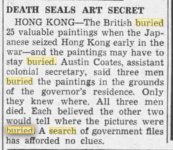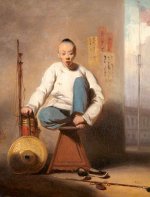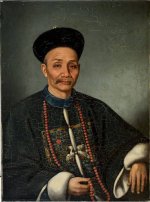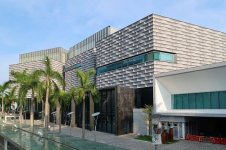Navigation
Install the app
How to install the app on iOS
Follow along with the video below to see how to install our site as a web app on your home screen.
Note: This feature may not be available in some browsers.
More options
You are using an out of date browser. It may not display this or other websites correctly.
You should upgrade or use an alternative browser.
You should upgrade or use an alternative browser.
WW2 Hong Kong Art Secret
- Thread starter jeff of pa
- Start date
Samanthy
Full Member
- Apr 22, 2018
- 219
- 251
- Detector(s) used
- White‘s Sierra Madre
White‘s TM–600
- Primary Interest:
- Cache Hunting
A good cover story and all three men conveniently dead ! I wonder if this story was put out and the paintings sold and hanging in someone’s private collection. That’s how colonialism worked...
uglymailman
Bronze Member
- Feb 3, 2010
- 1,267
- 1,465
I wouldn't know where to find the stories now but, they were in the Philippines not Hong Kong and were U.S. not Brits. One was about silver buried along a road and the other was about silver on a sunken ship, seems like Manila Bay. U.S. POW's were used to dive on the wreck using the old helmet with air pumped to them. There were several POW's and they milked the job as long as they could. As long as they brought up a few coins each day the Japanese let them slide. Something like 20K in silver? I once saw a newspaper report of our local Nat. Guard unit being paid and they were all payed in silver. Maybe most of the pay to G.I.'s in the P.I.'s got was silver? Keep the old newspaper stories commin Jeff. I always enjoy em. Good luck.
uglymailman
Bronze Member
- Feb 3, 2010
- 1,267
- 1,465
Well, after 40 yrs. I got MOST of the story right. Never dreamed I could find it again. Good ol interwebs. Lot's more money than I remembered. Good luck.
http://www.corregidor.org/chs_trident/silver/hubbell_01.htm
http://www.corregidor.org/chs_trident/silver/hubbell_01.htm
http://www.corregidor.org/chs_trident/silver/hubbell_01.htm
http://www.corregidor.org/chs_trident/silver/hubbell_01.htm
Last edited by a moderator:
KANACKI
Bronze Member
- Mar 1, 2015
- 1,445
- 5,933
- Primary Interest:
- All Treasure Hunting
Hello Jeff thanks once again for an interesting post. You be happy to know the paintings was not a cover story for some thing else. It was recovered. They was part of collection of an artist by the name of George Chinnery who was born in 5 January 1774 – 30 May 1852) was an English painter who spent most of his life in Asia, especially India and southern China.
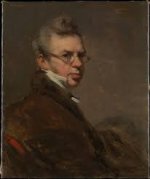
From 1825 until his death in 1852 Chinnery based himself in Macau, but until 1832 he made regular visits to Canton (now Guangzhou). He painted portraits of Chinese and Western merchants, visiting sea-captains, and their families resident in Macau. His work in oil paint was closely imitated by the Cantonese artist Lam Qua, who himself became a renowned portrait painter. Chinnery also painted landscapes (both in oils and in watercolours), and made numerous drawings of the people of Macau engaged in their daily activities.
In 1846 he made a six-month visit to Hong Kong, where he suffered from ill health but made detailed studies of the newly founded colony. He died in Macau on 30 May 1852 and is buried in the Old Protestant Cemetery there.
Other than artistic value, his paintings are historically valuable as he was the only western painter resident in South China between the early and mid 19th century. He vividly depicted the life of ordinary people and the landscape of the Pearl River Delta at that period. Among the subjects of his portraits are the Scottish opium traders William Jardine and James Matheson as well as the diarist Harriet Low.
There is some more detail in the following story.Argus (Melbourne, Vic. : 1848 - 1957), Thursday 15 June 1950, page 21.
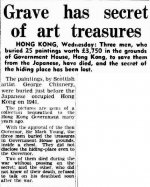
So Uglymailman sadly the mail has been mixed up with this one. The Hongkong painting story is totally different from The Philippine corrigador story which is a fantastic story in its own right.
Kanacki

From 1825 until his death in 1852 Chinnery based himself in Macau, but until 1832 he made regular visits to Canton (now Guangzhou). He painted portraits of Chinese and Western merchants, visiting sea-captains, and their families resident in Macau. His work in oil paint was closely imitated by the Cantonese artist Lam Qua, who himself became a renowned portrait painter. Chinnery also painted landscapes (both in oils and in watercolours), and made numerous drawings of the people of Macau engaged in their daily activities.
In 1846 he made a six-month visit to Hong Kong, where he suffered from ill health but made detailed studies of the newly founded colony. He died in Macau on 30 May 1852 and is buried in the Old Protestant Cemetery there.
Other than artistic value, his paintings are historically valuable as he was the only western painter resident in South China between the early and mid 19th century. He vividly depicted the life of ordinary people and the landscape of the Pearl River Delta at that period. Among the subjects of his portraits are the Scottish opium traders William Jardine and James Matheson as well as the diarist Harriet Low.
There is some more detail in the following story.Argus (Melbourne, Vic. : 1848 - 1957), Thursday 15 June 1950, page 21.

So Uglymailman sadly the mail has been mixed up with this one. The Hongkong painting story is totally different from The Philippine corrigador story which is a fantastic story in its own right.
Kanacki
KANACKI
Bronze Member
- Mar 1, 2015
- 1,445
- 5,933
- Primary Interest:
- All Treasure Hunting
I should clarify that the official interviewed for the newspaper story in 1950 did not know they was actually recovered in early 1946. They was taken out of their frames and rolled up and placed into cylinders sealed with wax to keep the water out housed in 44 gal drum. They was found by WW2 mine detector used to search the grounds of the governors residence near the front hedge.
The sources of that story of recovering was in the Singapore free press newspaper in 1946.
Kanacki
The sources of that story of recovering was in the Singapore free press newspaper in 1946.
Kanacki
uglymailman
Bronze Member
- Feb 3, 2010
- 1,267
- 1,465
Kanacki, I knew the Hong Kong story was different than the P.I. story. Art vs. silver. Then after my first post, just for sh..t's & giggles, I gargled the story and it popped up. I think the story I saw was in a magazine in the 60's. Sometimes my mind just wanders. Good luck and fair winds.
KANACKI
Bronze Member
- Mar 1, 2015
- 1,445
- 5,933
- Primary Interest:
- All Treasure Hunting
Hello Uglymailman the story you mentioned I know a few people who profited handsomely just recently as last year with about 1.4 millon USD recovered in silver coins American pre war silver Pesos from a site in central Luzon.
Kanacki
Kanacki
BillA
Bronze Member
Hi Kanacki,
how was the site found . . . and . . .
how was the site found . . . and . . .
KANACKI
Bronze Member
- Mar 1, 2015
- 1,445
- 5,933
- Primary Interest:
- All Treasure Hunting
Hi Kanacki,
how was the site found . . . and . . .
Well I can you how it was not found by strange shaped stones, markings or crude bogus maps. or by complex codes and symbols. And no chicken was sacrificed to find it, or spirits consulted.

Kanacki
BillA
Bronze Member
no turtles ? wth
ok, they got one of those damned 30' PI units
I'm so jealous
ok, they got one of those damned 30' PI units
I'm so jealous
Top Member Reactions
-
 3332
3332 -
 1930
1930 -
 1919
1919 -
 1186
1186 -
 1095
1095 -
 876
876 -
 804
804 -
 799
799 -
 795
795 -
 786
786 -
 766
766 -
 532
532 -
 489
489 -
 450
450 -
 449
449 -
 425
425 -
 423
423 -
E
412
-
 400
400 -
 394
394
Users who are viewing this thread
Total: 2 (members: 0, guests: 2)

